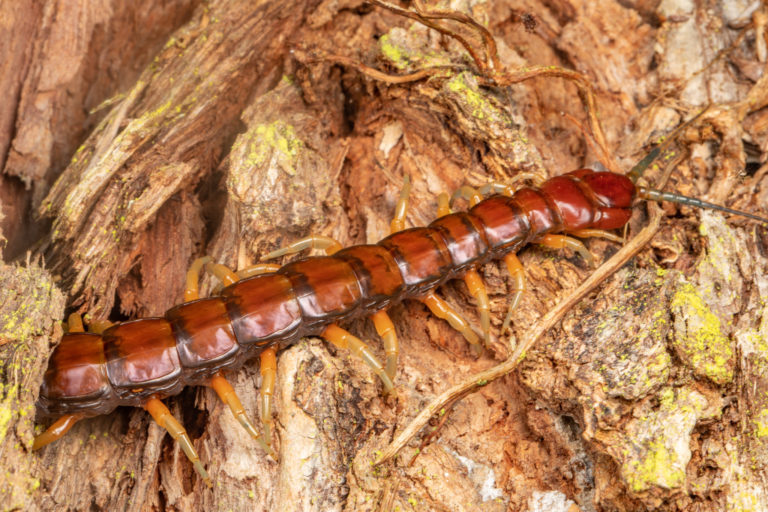- UID
- 15336
- 热情
- 40676
- 人气
- 42196
- 主题
- 417
- 帖子
- 17204
- 精华
- 0
- 积分
- 50358
- 分享
- 0
- 记录
- 1
- 相册
- 1
- 好友
- 15
- 日志
- 0
- 在线时间
- 11105 小时
- 注册时间
- 2004-11-6
- 阅读权限
- 30
- 最后登录
- 2025-8-10
    
升级    51.79% 51.79% - UID
- 15336
- 热情
- 40676
- 人气
- 42196
- 主题
- 417
- 帖子
- 17204
- 精华
- 0
- 积分
- 50358
- 阅读权限
- 30
- 注册时间
- 2004-11-6











|
新西兰有的甚至超过20厘米。
Giant centipedes are only found in the North Island and nearby islands, so southerners can relax, walk barefoot, sit on that forest log if you want to. But northerners tread carefully… Actually if you leave it alone, it will probably leave you alone, but if you’re curious, centipedes are fascinating creatures.
Known as hara or hura to Māori, the giant centipede is most often seen in the north of the North Island. It’s also found in Australia (so its native to New Zealand, but not endemic – not unique to Aotearoa). It shelters under or in logs and amongst leaves on the ground and it’s carnivorous, crushing and piercing prey with its fearsome jaws, or mandibles.
A centipede amongst leaf litter
Giant centipede. Note the increasing length of legs from head to posterior.
The centipede’s poison claws are an impressive and unique feature of centipedes. These large, robust, pincer-like appendages – known as forcipules – are located on the first segment following the head and are actually modified legs, which function as jaws. They are jointed, open and close in horizontal plane and end in sharp claws.

http://soilbugs.massey.ac.nz/chi ... %20Zealand%2C%20the,twenty%2Done%20pair%20of%20legs. |
|



